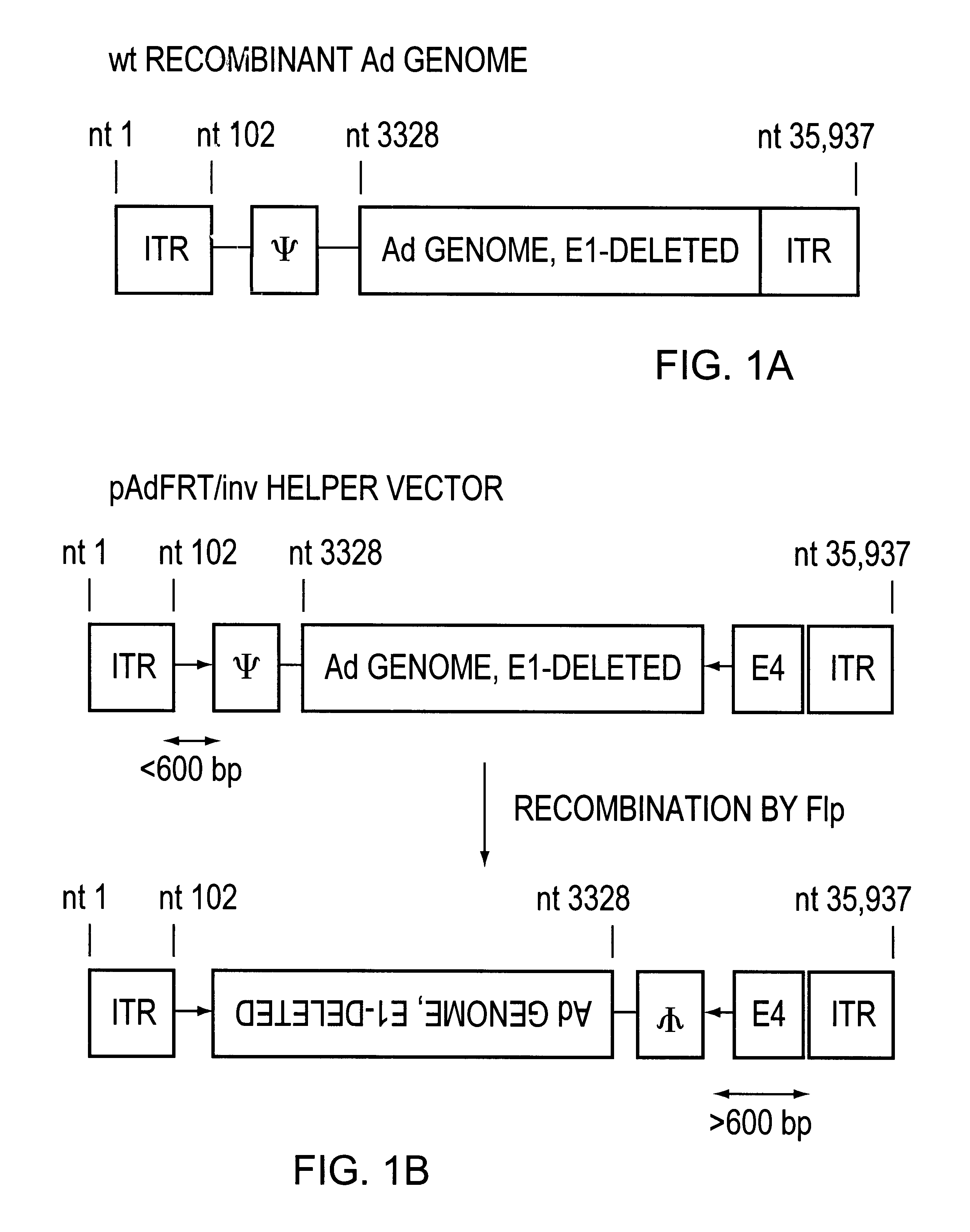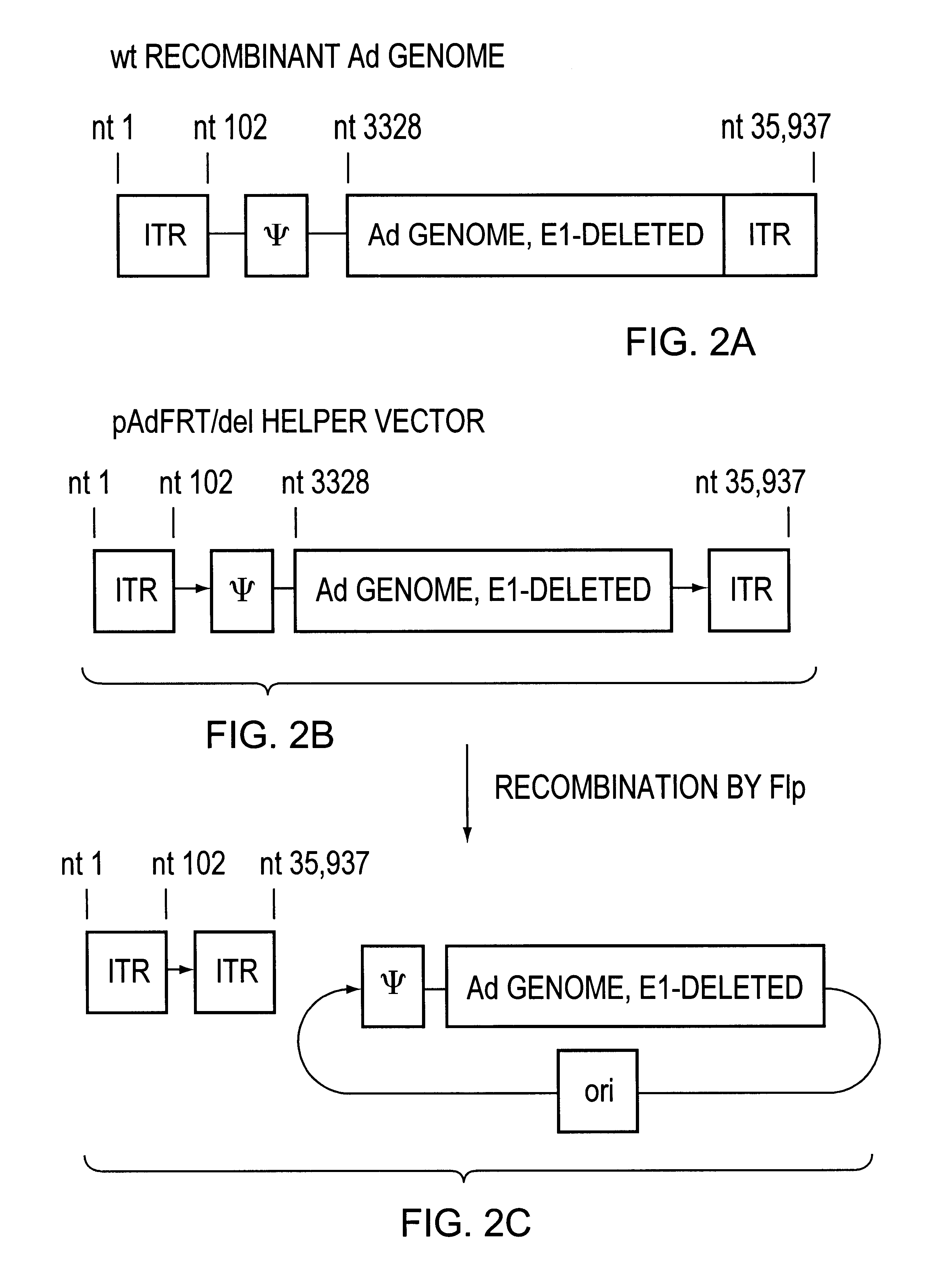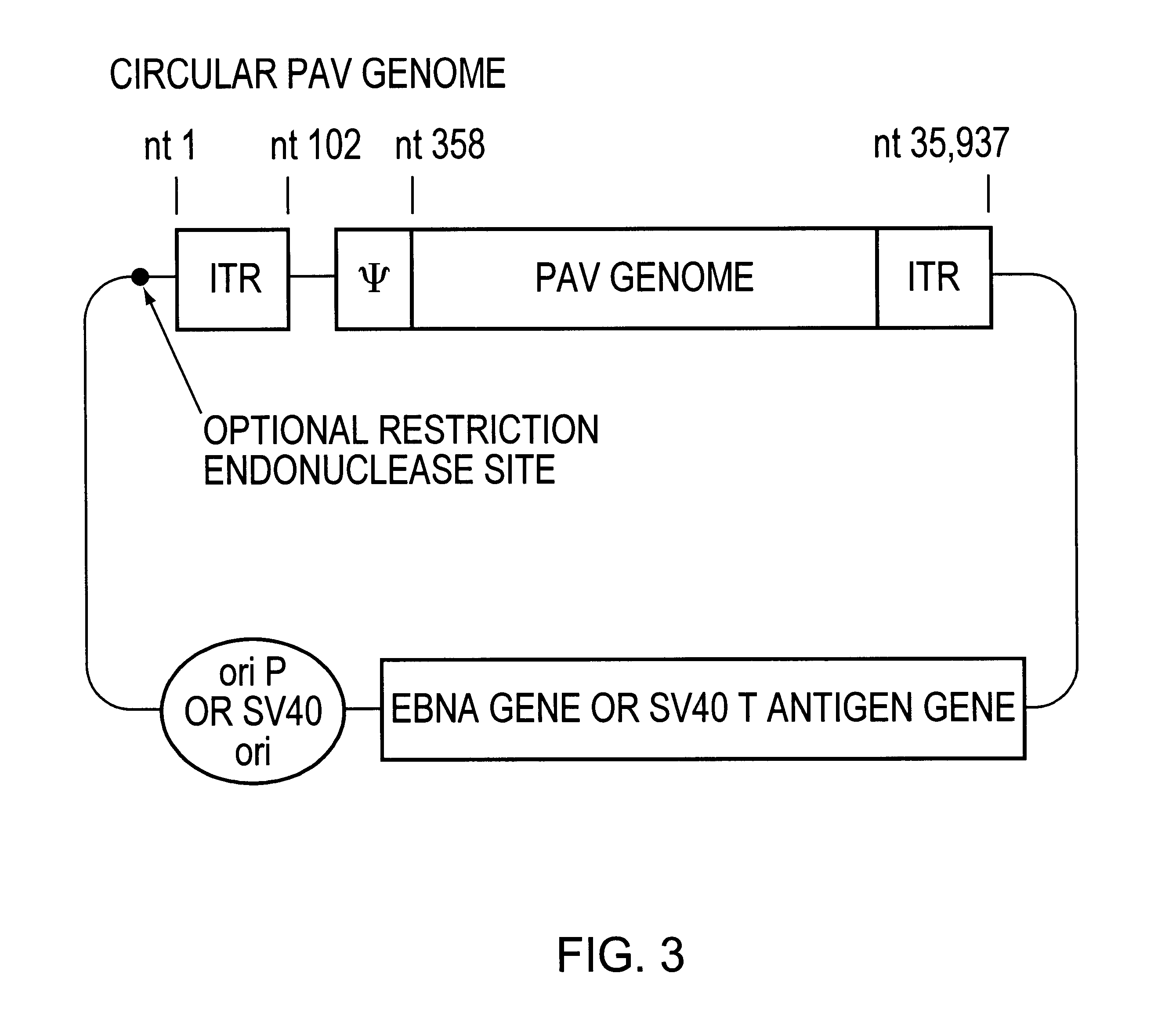Adenoviral helper vectors
a technology of adenoviral vectors and helpers, which is applied in the field of adenoviral vectors, can solve the problems of reducing the expression of the remaining viral genes present in the vector, defective replication of the adenoviral vector, and causing the deletion of the transfected cell by the presence of the remaining viral genes in the adenoviral vector
- Summary
- Abstract
- Description
- Claims
- Application Information
AI Technical Summary
Benefits of technology
Problems solved by technology
Method used
Image
Examples
example 1
Establishing a Cell Line Expressing Flp Recombinase
An essential component of the PAV and PAV helper systems described herein is a cell line that expresses a recombinase protein. Flp is a recombinase derived from yeast with an optimal reaction temperature of 30.degree. C. (Buchholz et al., 1998, Nature Biotechnol. 16:657-662). To make this enzyme more useful when expressed in mammalian cells, a thermal resistant form of the enzyme has been engineered (Buchholz et al., 1996, NAR 24:4256-4262); this thermal resistant form of Flp is known as Flpe6. Mammalian cells in which the action of this enzyme is used for PAV packaging include 293 cells (Graham, F. L., J. Gen. Virol. 36:59-72, 1977), PERC6 (Fallaux et al., Human Gene Therapy 9:1909-17(1998)) cells, HeLa cells (ATCC, Bethesda, Md.), A549 cells (Imler et al., Gene Therapy 3:75-84, 1996), as well as variants of these cells that have been altered by the introduction of the tetracycline gene expression control system (Gossen and Bujard,...
example 2
Improved Helper Vector Where the Packaging is Impaired Due to Repositioning of the Packaging Sequence to an Internal Position in the Helper Genome
In this helper construct, the nucleotide sequences which bind the Flp recombinase protein are placed in an inverted orientation relative to each other. The recognition sequence for the Flp recombinase is referred to as FRT and has the following sequence: GAAGTTCCTATTCTCTAGAAAGTATAGGAACTTC (SEQ ID NO:1). The left most FRT sequence is placed such that it follows nucleotide position 102 of the helper vector genome (FIG. 1B), and right-most FRT sequence is placed such that it follows nucleotide positions 32,820. (FIG. 1B). When this helper vector genome is introduced into the Flp-expressing producer cell, action of the Flp recombinase on these FRT sequences inverts the central portion of the helper vector genome such that the packaging elements are displaced from their close proximity to the ITR and embedded within the helper genome at a dista...
example 3
Improved Helper Vector Where the Helper Vector is Converted to an Episomal Form Lacking ITRs During PAV Production
In this helper construct, the nucleotide sequences which bind the Flp recombinase protein are placed in the same orientation relative to each other. The recognition sequence for the Flp recombinase is referred to as FRT and has the following sequence: GAAGTTCCTATTCTCTAGAAAGTATAGGAACTTC (SEQ ID NO:1). The left most sequence is placed such that the 5' G nucleotide of the FRT sequence follows nucleotide position 102 of the helper vector genome (FIG. 1B), and the 5' G of the FRT sequence follows nucleotide positions 35,835 in one helper version, following nucleotide position 35,850 in a second helper version, and following nucleotide position 35,875 in a third helper version. (FIG. 1B). When any of these helper genomes containing FRT sequences is introduced into the Flp-expressing producer cell, action of the Flp recombinase on the FRT sequences converts the linear helper ge...
PUM
 Login to View More
Login to View More Abstract
Description
Claims
Application Information
 Login to View More
Login to View More - R&D
- Intellectual Property
- Life Sciences
- Materials
- Tech Scout
- Unparalleled Data Quality
- Higher Quality Content
- 60% Fewer Hallucinations
Browse by: Latest US Patents, China's latest patents, Technical Efficacy Thesaurus, Application Domain, Technology Topic, Popular Technical Reports.
© 2025 PatSnap. All rights reserved.Legal|Privacy policy|Modern Slavery Act Transparency Statement|Sitemap|About US| Contact US: help@patsnap.com



